The 4 Biggest Pinterest Marketing Mistakes We Made (And How You Can Learn From Them)
Former VP of Marketing @ Buffer
I’m a bit embarrassed to share my early Pinterest Pins.
But here they are anyway.
A pin loaded with hashtags, a really odd-sized image, an image with a one-word description, a Pin with no description at all.
I’ve made a lot of mistakes with Pinterest, both in the Pins I’ve created and in the strategies and plans I’ve set forth.
And I’ve come to discover that Pinterest is wholly unique from Twitter and Facebook, and that I’ve had things quite wrong from the start.
All these mistakes have been a wonderful opportunity to learn. I’m grateful for the chance to keep improving my Pinterest strategy, and I’d love to share with you all my mistakes and the new perspectives I’ve gained from researching and experimenting with the best ways to Pin on Pinterest.
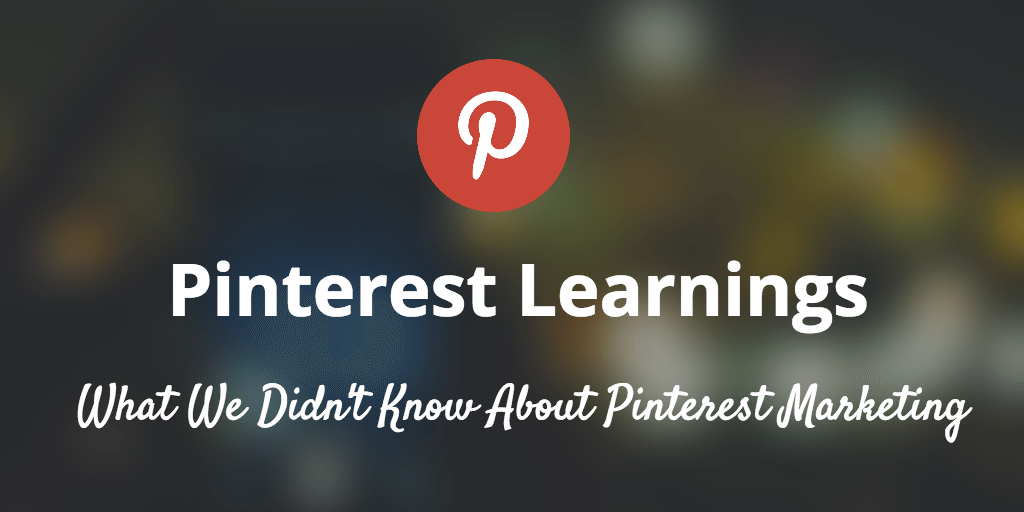
What we’ve learned about Pinterest marketing
- Optimal timing matters less, given Pinterest’s long shelf life
- Followers don’t matter (as much)
- Pinterest isn’t a social network like Facebook and Twitter
- Pinterest is brand-centric
When were gearing up to launch Buffer for Pinterest, I had the great chance to dive deep into Pinterest marketing.
And I brought way too much hubris along with me.
Writing for a social media blog, I think I naturally assumed that all this Pinterest marketing would come intuitively, that the tactics I had learned elsewhere could be copied over to Pinterest without skipping a beat.
I was wrong.
Pinterest has a couple of wonderful phrases that encapsulate a lot of what’s special and unique about the site.
Your most coveted audiences are planning the future.
Take advantage of the world’s largest, most actionable focus group.
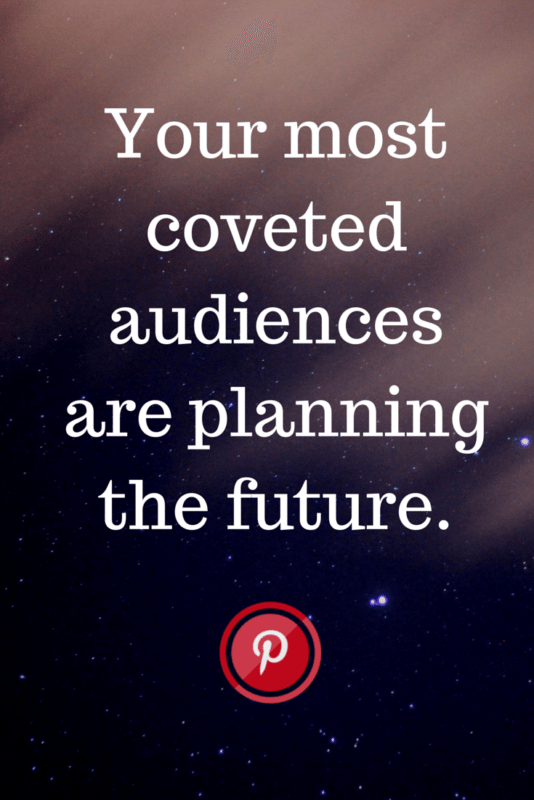
It’s unique phrases like these, along with the unique perspectives, that have helped me get my focus on the right track when it comes to Pinterest marketing. Along the way, here are some of the many mistakes I have made.
Why optimal timing on Pinterest matters less
Mistake #1: I was keen to find the best time to post on Pinterest
We love to dig up studies on optimal timing at Buffer as we’ve found it to be a key component to the boost in reach for tweets, Facebook posts, and more.
I assumed the same would be true of Pinterest as well.
And while there is a bit of data about the best time to post on Pinterest, optimal timing is not the most useful strategy for Pinterest marketing.
This is due in large part to Pinterest’s Smart Feed, an algorithm-based feed where content turns up based on high-quality Pins and related Pins, not on ideal timing.
In this way, Pins enjoy a much longer shelf life than the typical social media update. With a well-written, keyword-rich description, a Pin’s traffic can resemble that of an evergreen blog post, with views and repins happening well into the future.
Piquora ran a study analyzing the half-life of Pins and discovered that:
- 40% of the clicks happen within the first day.
- 70% of the clicks happen within first 2 days.
- 30% of clicks happen all the way through 30 days and beyond.

The key, Piqora CEO Sharad Verma explained to Venturebeat, is that Pinterest doesn’t share Twitter and Facebook’s emphasis on immediacy. Pinterest visitors browse and search the network in a way that makes it as much like a search engine as a social network.
“In the world of Google, 70 percent of searches are long-tail, composed of four or more words,” Verma says. “Our hypothesis is that the same thing is happening on Pinterest … searching and Pinterest categories resurface the old pins.”
I’ve found this to be the case with a lot of the Pins on the Buffer account.
When looking at the Pinterest stats for our Pins, it’s clear that some of our top-performing Pins have been around for quite some time and continue to gain traffic and engagement.
One of our top post impressions for the past month (over 1,100 views) was a graphic we made for a Peg Fitzpatrick guest post. The post and graphic were shared on April 21. The 1,100 views occurred starting one week later, and they appear as if they’ll continue on well into the future!
Looking at our top posts overall from the past 30 days, four of the top seven posts (more than half) were Pinned prior to the data range—some as much as one year ago!
So ideal timing—whether it’s the day of the week or the time of day—appears to matter less than a well-optimized Pin.
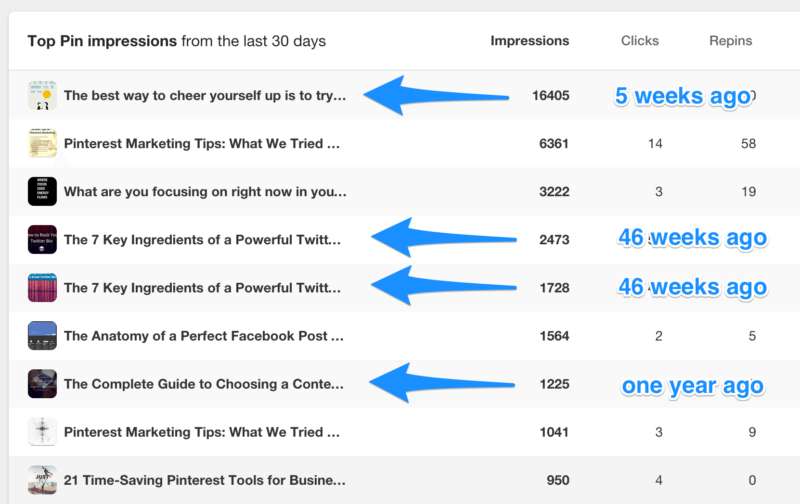
Courtney shared a great list of tips to optimize your Pin descriptions to capture that all-important long-term search traffic.
- Make sure all your content has rich, Pinnable, and well-captioned images.
- Make sure your pins link to a useful and relevant website.
- Move keywords toward the front of board names and Pin descriptions to make them easy to find.
- Optimize your headlines and image fields: Buffer pulls in the article’s headline as your Pin’s default description. Pinterest pulls in an image’s caption. (If there is no caption, it pulls alt text instead, and failing that, meta title).
- Add advice, instructions or how-tos when you can – informative Pins are up to 30% more engaging than other Pins!
- Prioritize clarity over cleverness in your Pinterest text.
- Try for a description of between 200 and 310 characters. According to Dan Zarrella, who researched 11,000 pins, that’s the most repinned and commented-upon description range.
And beyond optimal timing, I’ve also been pondering what exactly the effect of frequency has on Pinning. Is there an optimal frequency for Pinterest? Does optimal frequency matter?
Like optimal timing, my sense is that optimal frequency might take a backseat to well-written Pin descriptions and high-quality, well-optimized visuals. The takeaway here could be: It’s not when you Pin or how often you Pin, it’s what you Pin and how well.
Followers is not a key metric on Pinterest
Mistake #2: I focused too much on Pinterest followers
Followers are one of social media’s most touted metrics. Follower count is a big deal to a lot of people (brands and businesses, too) on Twitter and Facebook.
On Pinterest?
It just doesn’t matter as much.
Followers on Pinterest do not make for a significant factor in any key way other than social proof. Whereas on other networks where a large following means a larger megaphone, Pins don’t circulate in the same way on Pinterest.
Again it goes back to Pinterest’s Smart Feed, which places Pins on your homepage according to an algorithm, keyed to your personal Pinterest history and keywords. Followers isn’t taken into account.
The Pin Junkie blog has some great context to the way Smart Feed works:
Instead of seeing pins in chronological order from pinners you follow, Pinterest has introduced algorithms and filters to present pins to you based on three factors:
1. The highest quality pins from people you follow
2. Related pins based on what you pin
3. Interests you’re following
As a result, people are more likely to discover your pins from a search on Pinterest, rather than strictly from pins in their feed.
An algorithm-based home feed? Sounds a bit like Facebook, right? Well again there’s a key difference here between Facebook’s News Feed algorithm and Pinterest’s Smart Feed.
Your Pins can be seen by those who don’t follow you, without your having to pay for increased reach.
(On Facebook, if you’d like your post to appear in the feed of someone who’s yet to like your page, you’ll need to use Facebook Ads.)
And also, following on Pinterest can be quite a misnomer. Users can follow users. Users can also follow individual boards. This removes the following power from the person and places it on the content.
How Pinterest Differs From Twitter and Facebook
Mistake #3: I thought Pinterest was a social network, just like all the others
Technically-speaking, Pinterest is a social network, as its users connect with one another and share as part of a community. That being said, it’s not a social network in the same sense of a Twitter or a Facebook.
Tailwind CEO Daniel Maloney has a great way of putting it from a very high-level.
Twitter is mostly about what I’m doing.
Facebook is about who I am.
Pinterest is about who I want to be.
There’s a fundamental difference there, in the way that each of those networks is used. To a certain degree, the difference is based in time. Twitter and Facebook deal with the present—what I’m doing now, who I am today.
Pinterest is focused on the future.
In this way, Pinterest is more like a Pocket or an Evernote, tools that help you save ideas and articles for a future date.

We can see this in action in the way that users like Stephen Vian have pinned boards for woodworking, or how Anna Zubarev has pinned Blogging Strategies. On our Buffer account, too, we’ve built several boards that are focused on the things that we hope to achieve or to reference later.
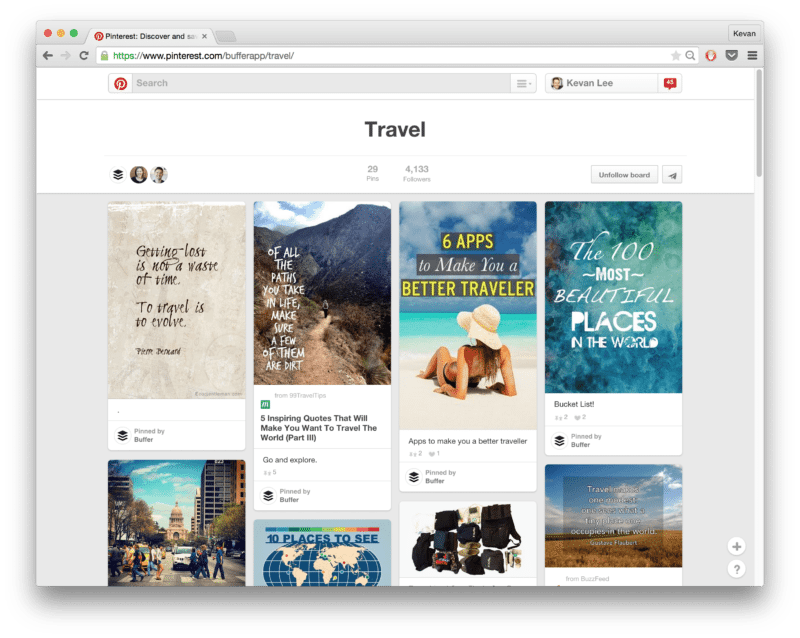
There’s an evergreen quality to all of this content, where we can refer to our boards long into the future and continue to find valuable, useful information that we’ve stashed away until the time is right.
People plan on Pinterest. And that in and of itself makes Pinterest unique compared to its social media peers.
The foundation of Pinterest was built by brands
Mistake #4: I assumed brands came late to Pinterest
Did you know: Two-thirds of Pinterest content is pinned by brands.
Brands were the original power Pinners.
Users have come along to repin and spread these Pins virally, adding them to boards and collections of future-oriented wishes or dreams.
It’s always been about the brands on Pinterest.
This is a significant perspective change for me as it differs again from so many other social networks. Social media channels often build their large user bases first, then brands and businesses join later to see how they can best fit in.
Pinterest was brand-focused from the beginning, and brands remain the integral ingredient in the quality, visual content that gets pinned most often.
We can see a bit of the paradigm difference here by comparing Facebook and Pinterest. Facebook added Pages onto its existing network of social connections (people, basically), and it’s now trying to figure out the best way to balance the needs of the individual people—status updates, friend news, birthdays, babies, etc.—with the needs of the businesses—getting their content seen in the News Feed.
Pinterest has had brands involved all along. With two out of every three Pins coming from brands, much of the highly visual, Pinnable content originates from brands and spreads through individuals.
Take a look here at the most popular Pinned posts from last year (more here also).
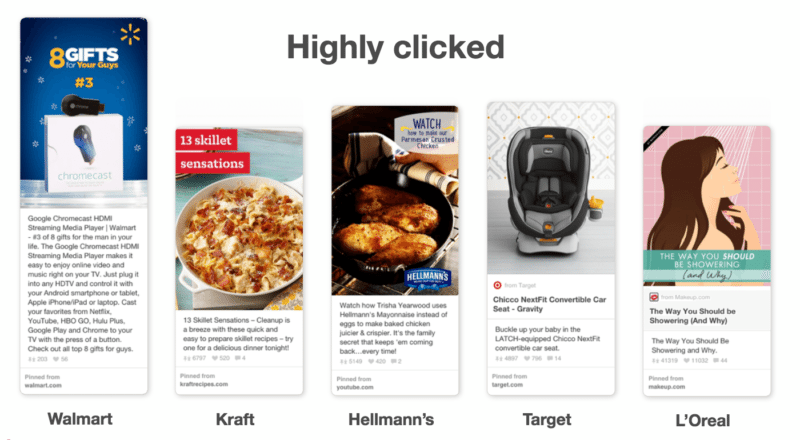
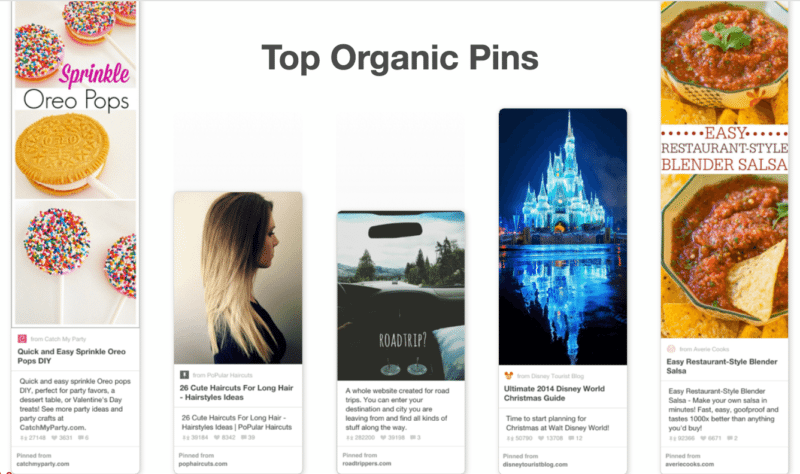
Conclusion
Again I find myself coming back to the pair of Pinterest quotes that do such a great job of setting the expectation for how to view and plan for Pinterest marketing.
Your most coveted audiences are planning the future.
Take advantage of the world’s largest, most actionable focus group.
With this in mind, it helps to focus my strategy a bit more. Pinterest is future-focused, in a way that Facebook and Twitter are not. Our usual strategies of optimal timing might be a bit off here, and we have a chance to optimize descriptions and keywords instead.
What have you found to be key to your Pinterest strategies? Does any of this info resonate with you? I’d love to hear your thoughts.
Image sources: Pablo, UnSplash, IconFinder, Pinterest
Try Buffer for free
140,000+ small businesses like yours use Buffer to build their brand on social media every month
Get started nowRelated Articles

TikTok's parent company must divest the app or face a ban in the U.S. Here's everything we know, plus how to plan ahead.
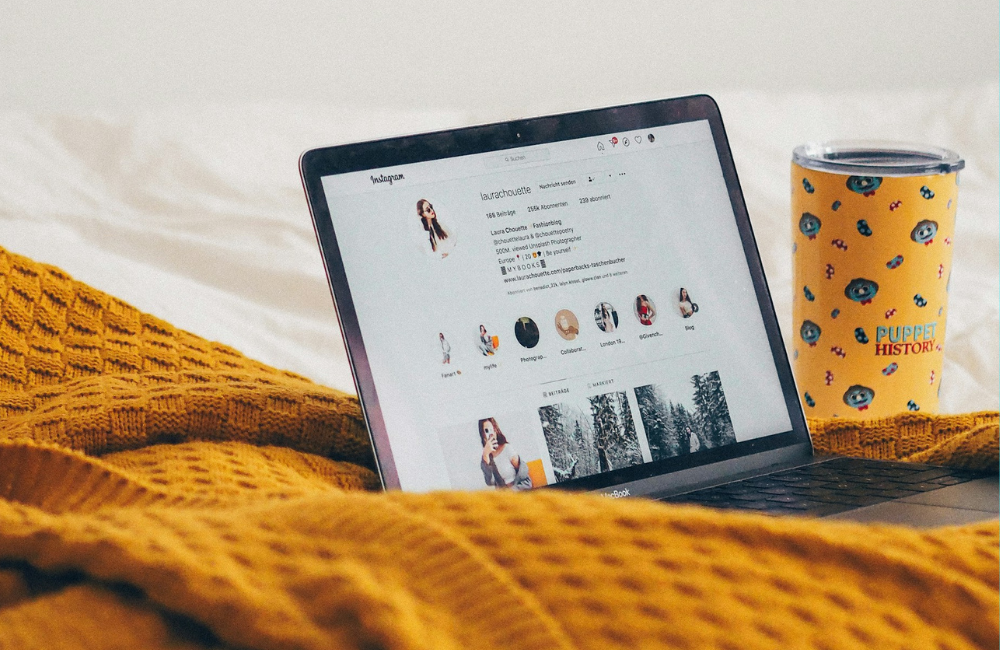
Whether you’re a full-time content creator, micro-influencer, nano-influencer, or just getting started, here’s how to create your own influencer media kit.

In this article, get answers to questions about social media for solopreneurs.